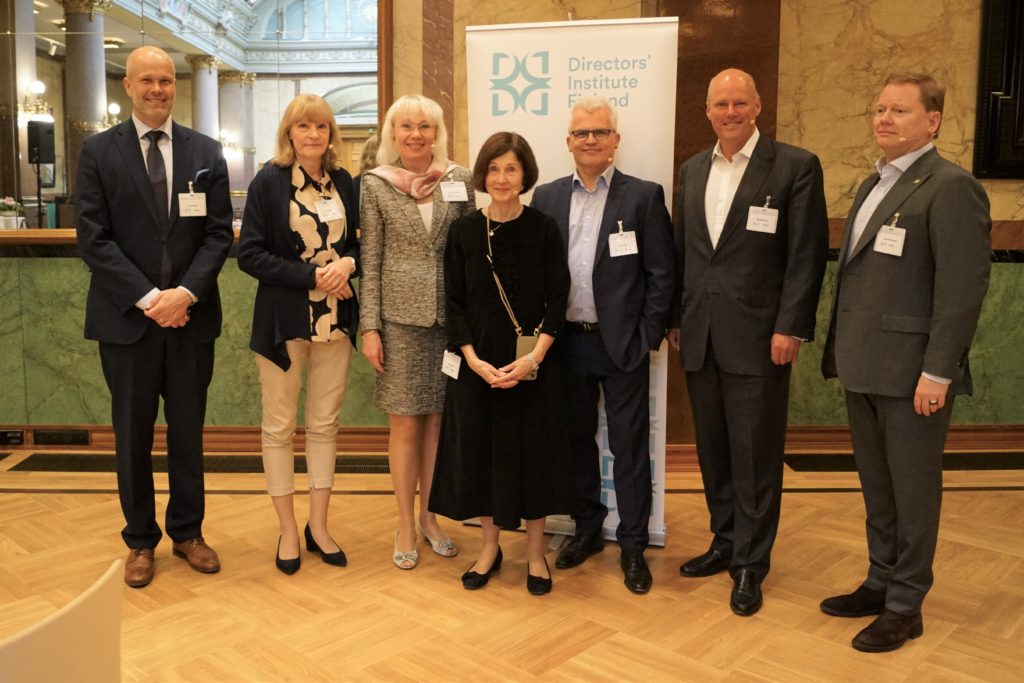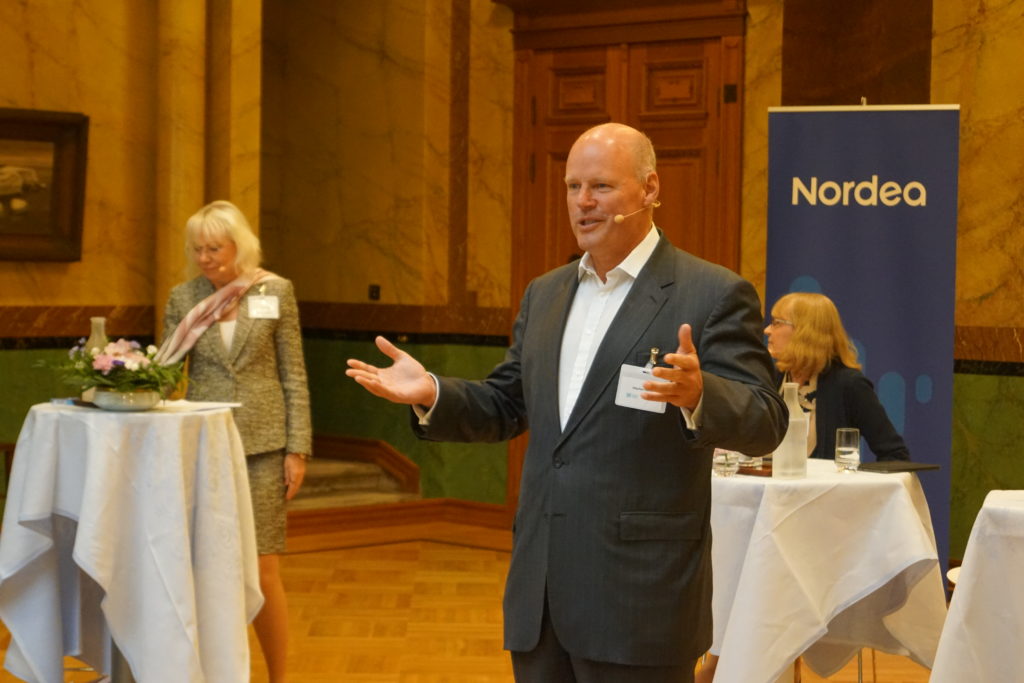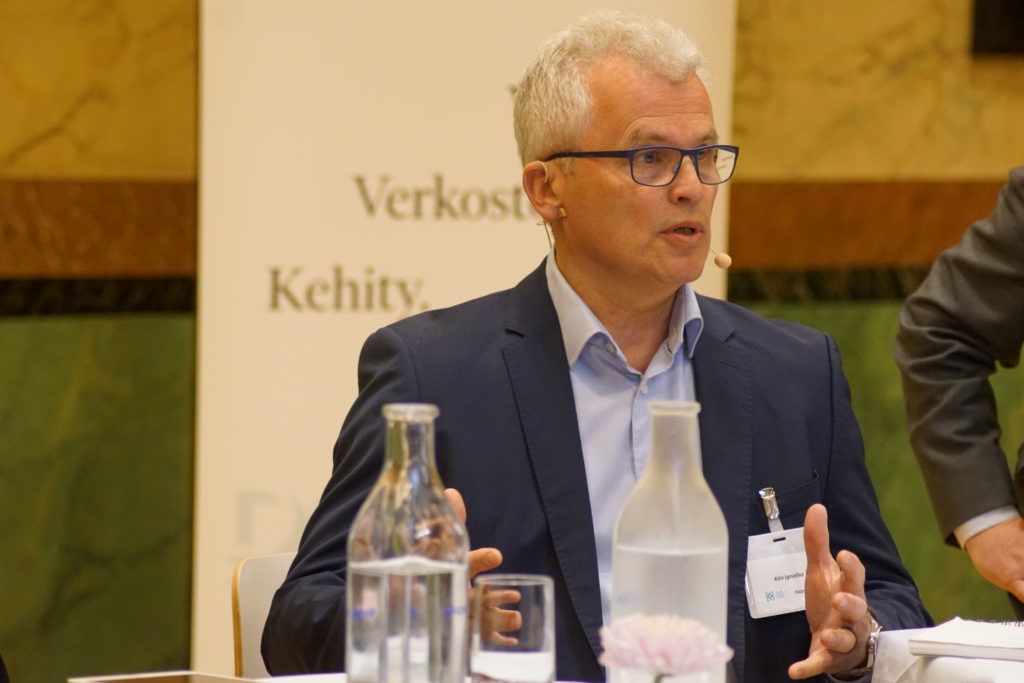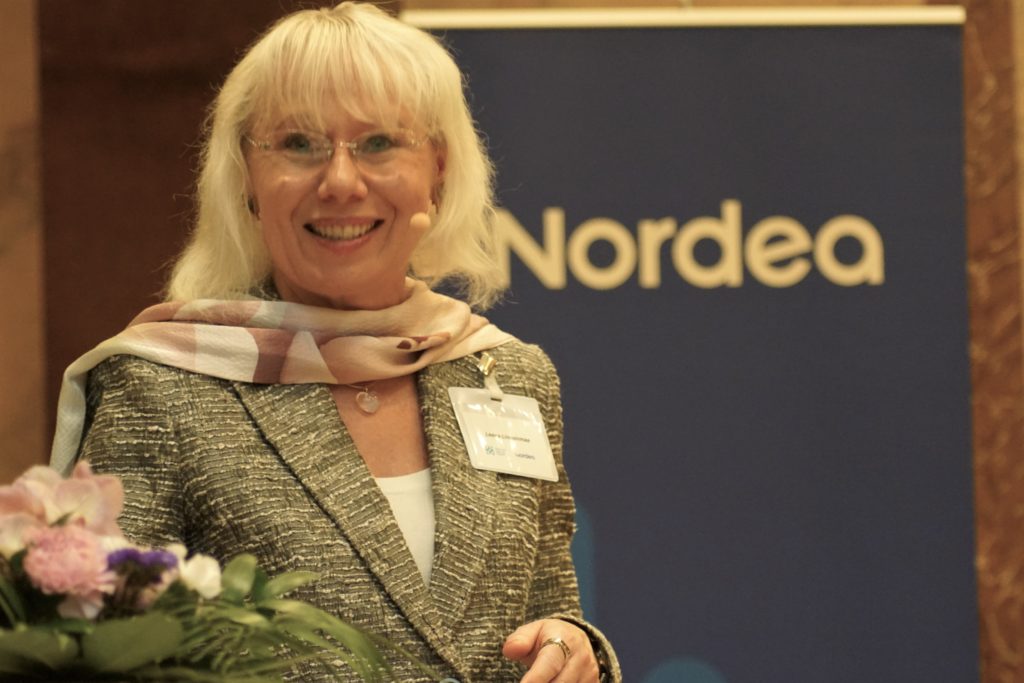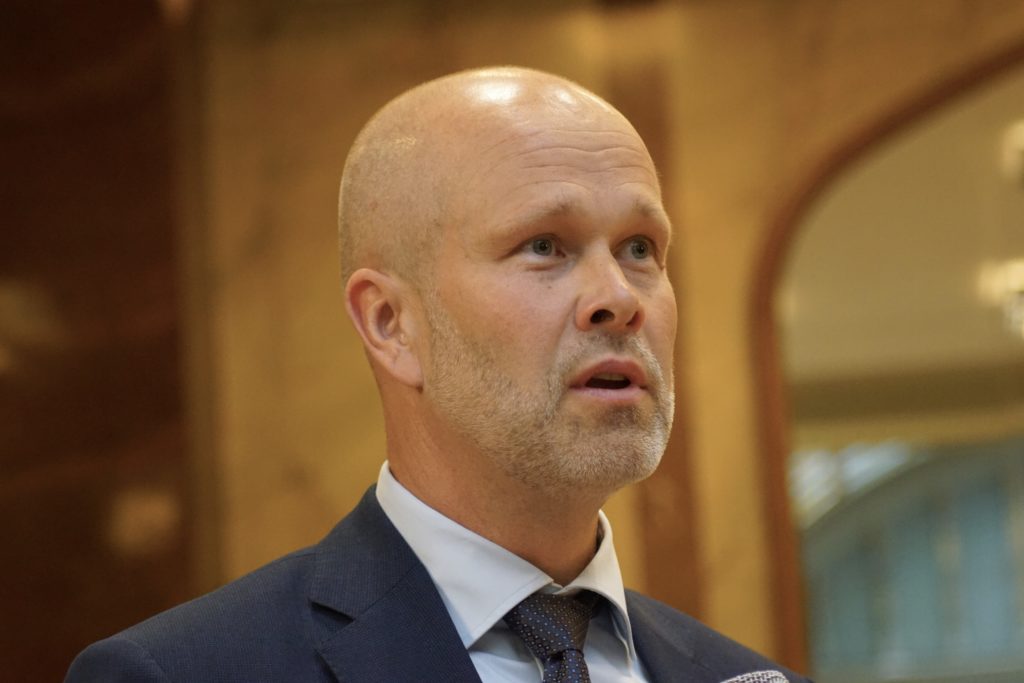The DIF x Nordea event was organized on May 31st as DIF’s first Chair Roundtable. After the opening remarks by Stephen Hester (Chair of Nordea), Leena Linnainmaa facilitated a panel discussion that delved into the challenges faced in board work. The panelists included Sari Baldauf from Nokia, Stephen Hester from Nordea, Kim Ignatius from Rovio, Kaisa Olkkonen from Veikkaus, Fixably, and Medanta, as well as Heikki Westerlund from Aspo and Oriola.

What is the main task of a Chair? How will a Chair succeed in creating an atmosphere of equality and mutual respect in more and more diverse boards? How can all board members contribute fully, including the latest arrivals? How much airtime should a Chair use? What is a Chair’s role in a company’s strategic planning compared to the CEO? During the many crises of the past years, have boards become more or too operative? How should boards handle stakeholder dialogue, including shareholders?
Bringing Value to the Company
At first, the discussion focused on the tasks and role of chairs. Hester emphasized that the chair is the leader of the board who helps a company to succeed. The chair must be effectively on the spot about what you need to do and what to do differently.
Baldauf commented that the chair’s most important task is to think about the things to focus on in the following years and where you need to spend your time right now.
All panelists agreed that the chair must bring value to the company. She should foster a future-oriented mindset.
It depends on the company size, phase, rules, and policies what is the best way to operate. For example, startup boards are more casual and operational.
Ignatius stressed the importance of building trust and respect. Viewing themselves as a united team with shared goals and direction enables the board to overcome challenges effectively.
Westerlund highlighted the chair’s role in delivering shareholder value and acting as a bridge between the company and its shareholders.




Shaping Board Dynamics and Enhancing Board Effectiveness
The chair plays a critical role in shaping the quality of board work and sets the tone and atmosphere of the board. Their behavior and focus have a clear influence on the company’s impact on society and how, e.g., diversity is perceived.
It is the chair’s responsibility to bring the best out of the team. A well-designed preparation program helps board members feel confident and ready to contribute.
Informal time spent together, such as dinners before board meetings, allows board members to get to know each other. Engaging in informal discussions on the same topics as in formal meetings gives a running start to discussions in actual meetings.
The chair should provide sufficient space and time for everyone to share their thoughts. Ensuring that each person’s contributions are taken seriously is essential. At the same time, recognizing that individuals are not experts in everything is important. The atmosphere should encourage members to express their thoughts and feelings openly.
Understanding the strengths of board members comes from knowing them well. One-on-one discussions between the chair and board members are useful for building relationships and getting to know individuals better.
Board member nominations should ideally be planned 5-6, at least 2-3 years in advance. Startups may follow a different approach: typically, a board consists of a core team and two outside members, forming a highly goal-oriented team. As the company grows, diversity and other considerations can be taken into account.
Multicultural Boardroom Insights
Baldauf shared her experience in multicultural boardrooms, stating that Finnish boards are highly professional. She emphasized the educational value of experiencing board work in different contexts, such as in the US. When board members do not share a common native language, it becomes crucial to be attentive to nuances and ensure a shared understanding.
Ignatius noted the importance of acknowledging and accepting that foreign board members are typically unfamiliar with Finnish corporate governance practices.
Westerlund emphasized the significance of having at least two foreign board members rather than just one. He also highlighted the need to prepare for potential cultural differences, such as confrontation styles.




Challenges Faced by Chairs
Chairs face various challenges and difficulties in their role. One important task is to ensure sufficient time for discussing relevant topics. It often takes years to achieve effectiveness in board practices.
The chair’s role is to conclude discussions. This can involve making a decision or determining the need for further deliberation in a subsequent round. It is essential to avoid leaving important matters in the air.
The chair is pivotal in framing and summarizing discussions, which may require slightly more airtime than other members. Additionally, the chair typically invests more time between meetings in preparation and planning.
Hester emphasized that the effectiveness of board meetings diminishes as the number of participants increases. The primary goal is to make decisions and add value, and it can be helpful to seek feedback after each meeting to evaluate its success.
One key aspect is how chairs challenge and support the CEO.
It is important to remember that the CEO is responsible for running the company, while the chair leads the board.
A beneficial practice is to have board-alone discussions.




Ownership of the Strategy
The chair and the board must take ownership of the strategy.
While the board can suggest topics for consideration, the CEO leads and the management executes the strategy on a daily basis. The implementation and leadership of the strategy happen in real-time through management’s efforts. However, the board provides feedback and supports the management team. And as Olkkonen reminded, also the management team must support the board work by keeping the board informed.
Baldauf highlighted the importance of considering the time horizon. The management team focuses on day-to-day activities, while the board takes a longer-term perspective. The chair’s responsibility is to ensure that strategic items are integrated into the board’s agenda throughout the year, aligning it with management’s priorities. Ignatius also brought a future-oriented perspective into the discussion. Regarding, e.g., AI, it is important to think how this affects our business.




Board work during crises
Sometimes the board needs to be more operationally involved and support the management, especially during crises or when developing a new business. Board members can, for example, participate in workshop sessions, as presented by Baldauf. However, as Hester commented, the entire board doesn’t always need to meet; smaller groups may be more effective.
Shareholder Dialogue
The efficient use of committees and organizational touchpoints can facilitate shareholder dialogue. Regular investor meetings, roadshows, and official reporting are typical avenues for engaging with key shareholders, industry experts, and governance representatives. Direct calls and messages related to, e.g., sustainability do happen and can also provide valuable insights.
Regarding shareholder input in strategy, Westerlund advised board members to meet with shareholders and (passively) listen to their views to better understand their perspectives.
When discussing with shareholders, Olkkonen emphasized the importance the company to have a clear message and communication policy. Everyone must understand their roles, including owners, management, and the board.



